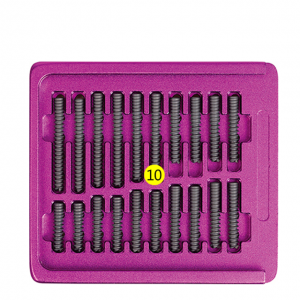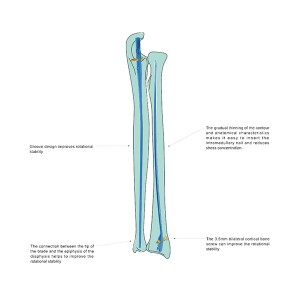Posterior Spinal Fixation System Instrument Kit
Acceptance: OEM/ODM, Trade, Wholesale, Regional Agency,
Payment: T/T, PayPal
Sichuan Chenanhui Tehnology Co., Ltd.is a supplier of orthopedic implants and orthopedic instruments and is engaged in selling them, owns its manufacturing factories in China, which sells and manufactures internal fixation implants Any inquiries we are happy to reply. Please choose Sichuan Chenanhui, and our services will definitely give you satisfaction.What is L4 L5 posterior lumbar interbody fusion?
PLIF, short for Posterior Lumbar Interbody Fusion,which is used in the treatment of lumbar spine diseases, such as surgery for degenerative lumbar disc disease and lumbar spondylolisthesis.
Surgical process:
This procedure is usually performed at the lumbar 4/5 or lumbar 5/ sacral 1 (inferior lumbar) level. At the beginning of the procedure, a 3 to 6 inch long incision was made in the midline of the back.Next, the muscles of the lumbar region, called erector spinae, are dissected and removed from the lamina on both sides at multiple levels.
After removal of the lamina, the nerve root could be visualized and the facet joint just behind the nerve root was trimmed to allow adequate space around the nerve root.The nerve root was then pulled to one side to clear the disc tissue from the intervertebral space.A class of implants called interbody fusion cages are inserted into the intervertebral space to help preserve normal space between the vertebral bodies and relieve compression of nerve roots. Finally, the bone graft was placed into the bone cage as well as the lateral aspect of the spine to facilitate fusion.

What is a spinal instrumentation?
Spinal instrumentation refers to a range of medical devices and tools used in spinal surgery.
These instruments include, but are not limited to, drills, probes, grips, compressors, spreaders, thrusters, rod benders and handles.Hypotension: The injection of bone cement causeS acute vascular dilation, which leads to a reduction in the return of blood to the heart and a decrease in cardiac output.







They are designed to assist physicians in performing precise manipulations such as positioning, cutting, fixation, and fusion during spinal surgery.The use of spinal instruments helps to improve the success and safety of surgery, reduce surgical complications, and promote patient recovery.
What is the position for a posterior spinal fusion?
Posterior spinal fusion is performed in the prone position. Posterior spinal fusion is a common spinal surgical procedure used to treat various spinal diseases, such as scoliosis and disc herniation. When posterior spinal fusion is performed, the patient is usually placed in the prone position, where the patient is prone on the operating table with the abdomen hanging and the chest and legs touching the table.This position helps the physician to better expose and manipulate the posterior spinal structures, such as the lamina and facet joints, to complete the fusion procedure.
Nursing care after posterior spinal fusion includes the following aspects:
1.Position care: In the early postoperative period, the patient should be kept in the supine position to minimize compression of the surgical site.
2.Wound and drainage care: postoperative dressing was changed regularly to keep the wound clean and dry to prevent infection.
3.Rehabilitation training: on the first day after operation, the amount of activity was gradually increased according to the situation, and the patients were encouraged to carry out active activities of the limbs, such as hand grasping and elbow bending.
































